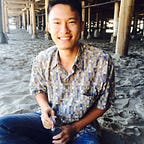Confucianism-Great Learning part 1
Introduction to Great learning: The Structure
The intro of Great Learning maps its course in reverse. It establishes the goal and work it self backwards.
The Structure
Great Learning begins with a point, the end goal: Optimum kindness.
Along the way to get there, everything we do must not deviate from the path of being good and spread good. The latter not only enlarges virtue, it also puts Confucianism to practice. Hence the saying, “the best way to learn is to teach.”
“The way of Great Learning lies in illuminating bright virtue, assisting others to obtain virtue, and ends at optimize your kindness…”
Comprehending the end initiates a whole list of internal states in a sequence.
“…Once you solidified the end game, stability will come. Once stability is cemented, it’s possible to arrive at serenity. Once you are serene, it’s possible to feel security. Once you feel security, it’s possible to contemplate. If you can contemplate, you can gain…”
But what exactly are you gaining?
You gain the capacity to organize your thoughts, the starting point of the 8 progressions, which further unleashes a chain reaction for rest of the 7 progressions.
“…classifying matters leads to optimum knowledge, optimum knowledge leads to honest desire, honest desire leads to straight heart, straight heart leads to conditioned physique, conditioned Physique leads to orderly family, orderly family leads to governed country, governed country leads to virtuous world…”
Just like all great ideas, it won’t be complete without closing the loop.
This basic Confucianism structure is almost complete. Although not written in Great Learning, other Confucianism scholars have categorized the 8 progressions into 2 subcategories that I found useful. So I am going to add that in since our main goal is Confucianism via Great Learning, not the other way around.
This still isn’t the full picture, but it’s enough for our intended purposes. Let’s finish the rest of the paragraph.
“…This principle applies to kings as well as commoners, all should treat managing your Physique as the origin. It is not possible to have a chaotic origin and yet the end properly managed. There is no precedent in focusing on trivial matters while neglect the important areas.”
Hence, our final graph with the Origin.
Confucianism believe in natural order of things with causal relationship. The teaching absolutely cannot tolerate any reverse of that order. It sees mastery over one self as the cause, and rest of the external practice as effects.
“Matter has beginning and ending, incidents have destination and origin. Knowing its orders will bring one closer to the way.”
Conclusion
Almost everyone in China thinks Confucianism is for the elite ruling class to maintain order or power. There is no doubt you can view this idea half empty, because many malicious characters have used the teaching for self gain at the expenses of those who aren’t familiar with it.
I am not the first one who tries to push back at this narrative, and certainly won’t be the last either. In fact, Confucius him self is an interpreter of Confucianism too, only it wasn’t called Confucianism back then or ever in China. All of his ideas can be traced back to even older texts. One of his student Zheng Zhi, continues that tradition, and uses ancient wisdoms to strengthen the teaching. Next time we will explain how he does that, and the rest of the series will dive deeper into each stages, starting with the origin.
